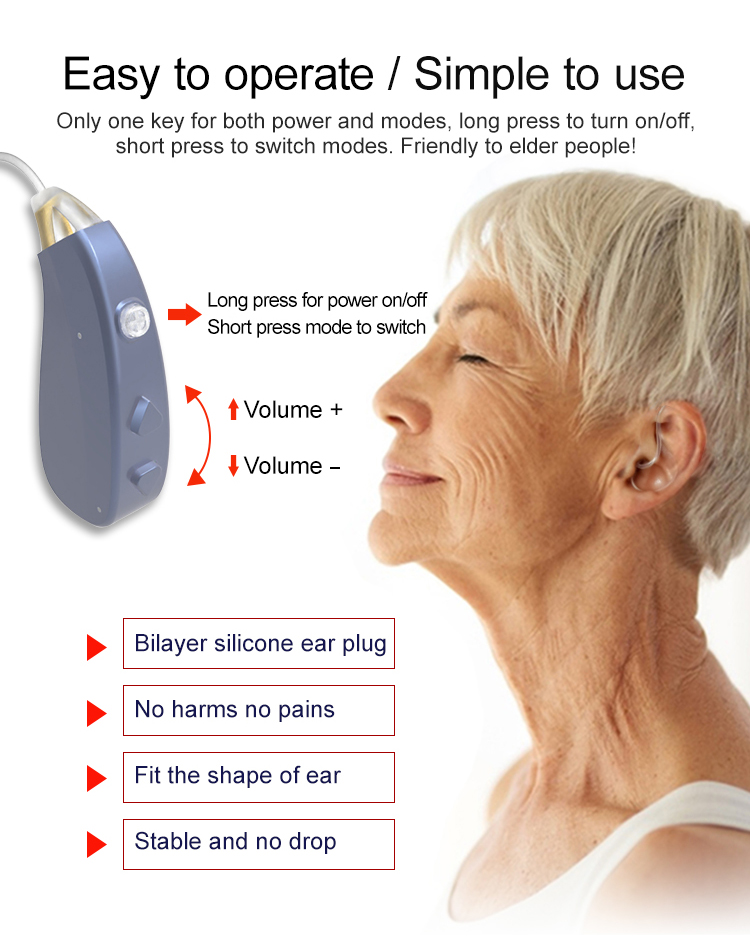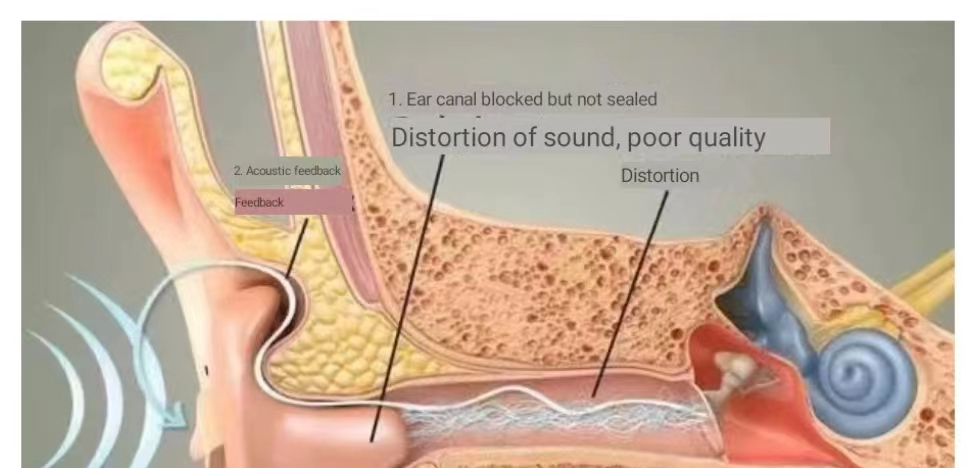
What is the problem with hearing aids? What should I do?
I believe that many of my friends have encountered hearing loss who mentioned the sound quality problems of hearing aids.
Often, however, when people with hearing impairments complain about the “poor quality” of their hearing aids, it is often a very broad, ambiguous question, rather than a simple hearing aid quality problem of sound slag.

On the contrary, it is quite possible that a minor issue causes a temporary change in sound or a change in the intensity of the sound in some listening environments, which can be resolved by troubleshooting or parameter adjustment.
Today ENNO hearing aid will put aside the poor quality of hearing aids, and talk about what is the "poor quality" of most hearing-impaired people, and how to solve it.
There are several reasons why people with hearing loss complain about hearing aids as “poor quality”. see below for solutions.
Not loud enough
when the hearing aid is not loud enough, the sound may be “weak" and people with hearing loss often need special attention to hear and hear clearly.
Solution
1. Troubleshooting:
Check if the sound conduction path of the hearing aid is blocked, such as the microphone port, sound guide pipe, the sound outlet is blocked by stains or earwax;
Or whether the hearing aids are becoming less audible due to dampness;
Or if the volume knob is set too low
The above three problems are often easy to ignore, especially for the hearing impaired.
2. Parameter adjustment:
After minor faults have been removed, the hearing aid can be parameterized, such as increased gain, as appropriate.
Not high definition
When people who are hard of hearing talk with others and feel that other people’s words are not clear, they may blame the “poor sound quality" of the hearing aids.
1) Troubleshooting:
Check for blockages in the sound conduction pathway and whether the hearing aids are damp in question 1 above and troubleshoot the symptoms.
2) Parameter adjustment:
The definition of the words and sentences is not high. It is suggested to increase the gain of the high-frequency part.
A hollow or rumbling sound
After wearing a hearing aid, because both ears are blocked, for low frequency normal or mild to moderate hearing loss hearing impaired people, there may be a hollow, stuffy, or rumbling sound, which may also be the reason why people with hearing loss misperceive “poor quality”.
Solution
1) Troubleshooting:
Check whether the air hole is blocked, resulting in excess low-frequency energy in the ear canal is not excluded, it is recommended to clear the air holes.
It is suggested to increase the size of the air hole in the condition of audio-visual damage.
2) Parameter adjustment:
This kind of low frequency hearing better brings the sound hollow or rumble, often appears in the hard of hearing when the person speaks, for blocking the ear effect, it is recommended that the low frequency gain of loud sound can be appropriately reduced.
Squeak squeak sound
When the sound of a hearing aid is too large, coupled with poor sealing of the hearing aid shell or ear mold, the excessive sound in the ear canal after amplification will run out, and be picked up and amplified by the hearing aids.
The repeated amplification produces acoustic feedback, the “squeak, squeak” heard.
Hearing aids are the most common types of hearing aids.

Solution
1) Troubleshooting:
Check whether the hearing aid shell or ear mold is sealed, whether the sound guide tube or ear mold is broken, and whether the air hole is too large, and troubleshoot the symptoms.
2) Parameter adjustment:
The gain of hearing aids, especially the high-frequency gain of a neutral tone, should be reduced appropriately without affecting the audibility of the hearing impaired.
In addition, it is suggested that the acoustic feedback test can be repeated in the fitting software to check which frequency and how loud will cause the howling, and adjust the symptom.
Poor listening to music:
As we know, the frequency response of speech sounds is quite different from that of music, and the frequency spectrum of music sounds is wider than that of speech.
Most hearing aids can meet the needs of the hearing-impaired. If you wear a hearing aid, you may need to wear it.
Solution
Parameter adjustment:
Suggest to listen to music set up a separate “music program”, the program will be for listening to music for independent gain, noise reduction functions, and other parameters set.
In addition, the utility model can also be matched with an audio transmission device for listening to the music of mobile phones, music players, televisions, and other devices.

|
Kayla Zhou ( Area Sales Manager) Phone/Wechat: +86 13392043391
WhatsApp/Skype: +86 13392043391 |

|
Croesus Lo ( Area Sales Manager) Phone/Wechat: +86 13352776095
WhatsApp/Skype: +86 13352776095 |
Copyright © 2025 Guangdong ENNO Medical Technology Co., Ltd., All Rights Reserved.